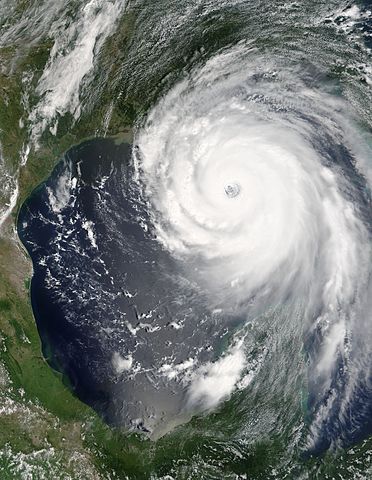Click to view full Infographic The ever-expanding reach of technology has made the reality of a natural disaster that much more palpable in the modern age. With in the span of nine months, humanity had come to grips with the violence of Mother Nature twice — first with a tsunami in the Indian Ocean and then, on August 29th, 2005, with Hurricane Katrina making landfall in the southeastern United States. With more than $108 billion in property damage, the storm ranked costliest in American history is remembered for its sweeping destruction and the slow government response to it. Though much of the attention regarding Katrina is focused on the vast damage caused in New Orleans, many forget the hurricane had passed over the Bahamas, Cuba and Florida before making a second landfall across eastern Texas, Alabama, Mississippi and Louisiana. Erupting as a tropical depression on August 23rd, the system would be upgraded to a tropical storm the following day and gain strength before hitting southern Florida as a hurricane named Katrina on the 25th. Once into the Gulf of Mexico, the storm system catapulted into the realm of major hurricanes by feeding on warm waters. By the morning of August 28th, Katrina had become a Category 5 storm with winds of 175mph. At 6:10pm on August 29, 2005, the hurricane came ashore to wreak havoc. Tearing through coastal towns near the Louisiana-Mississippi border, the storm retained an incredible width, at one point stretching from the Florida panhandle into eastern Texas — a distance of nearly 500 miles. Sweeping up into the eastern United States, the downgraded tropical depression would eventually reach all the way to the Great Lakes on August 31st. The carnage left in Katrina’s wake was only beginning to be visualized by that point. In Mississippi, more than 90 percent of property near the coastline was damaged or destroyed. High waters and heavy rainfall had flooded land as far as 12 miles in from the beach, turning boats and cars into floating bulldozers leveling homes and businesses. The city of New Orleans, as much as eight feet below sea level and guarded by levees, suffered marginally less damage — 80 percent — but endured human suffering on much higher level. As the poorly-maintained levee system ruptured under the force of an unprecedented storm surge, hundreds died and millions were left without homes, many of them from the most poverty-stricken districts in the city. A catastrophe on every level, the state and federal response to Hurricane Katrina came under fire immediately. As early as the 26th, the National Hurricane Center had announced the predicted track of Katrina, expanding its recommendations for evacuation throughout the next three days. The US Coast Guard, aware of the increasing likelihood of a state of emergency, called up reservists and pushed supplies offshore in order to be prepared for the aftermath. Working in tandem with the federal government, state officials issued voluntary and mandatory evacuation orders for Louisiana, Mississippi and Alabama. No one, however, could have planned for the failure of the levee system. When waves from Katrina’s storm surge began lashing against the floodwalls on August 29th, some 53 weaknesses were soon exposed — all while other gates remained open — putting much of the basin under water. (The American Society of Civil Engineers, in a report two years later, would estimate flooding might have covered just a quarter of the city if all had operated as intended.) In the midst of this, displaced residents converged on the Louisiana Superdome, an evacuation center that had itself been damaged, turning the venue into a tragic scene as limited necessities and a lack of medical supplies led to violence and rampant illness. Fueled by confusion about responsibilities local, state and federal authorities faced an avalanche of criticism. The Superdome, prepared to house 800 people in the event of a disaster, had received more than 30,000 evacuees. The New Orleans Civic Center, completely unprepared, faced some 25,000. In the wake of the fiasco and an ensuing investigation, laws regarding national emergencies were altered as a variety of politicians answered to an angry populace. In April 2006, at the request of the United States government, the World Meteorological Organization retired the name Katrina. It will never be used for an Atlantic hurricane above the equator ever again.
August 29, 2005 CE – Hurricane Katrina Makes Landfall
Click to view full Infographic The ever-expanding reach of technology has made the reality of a natural disaster that much more palpable in the modern age. With in the span…
436
